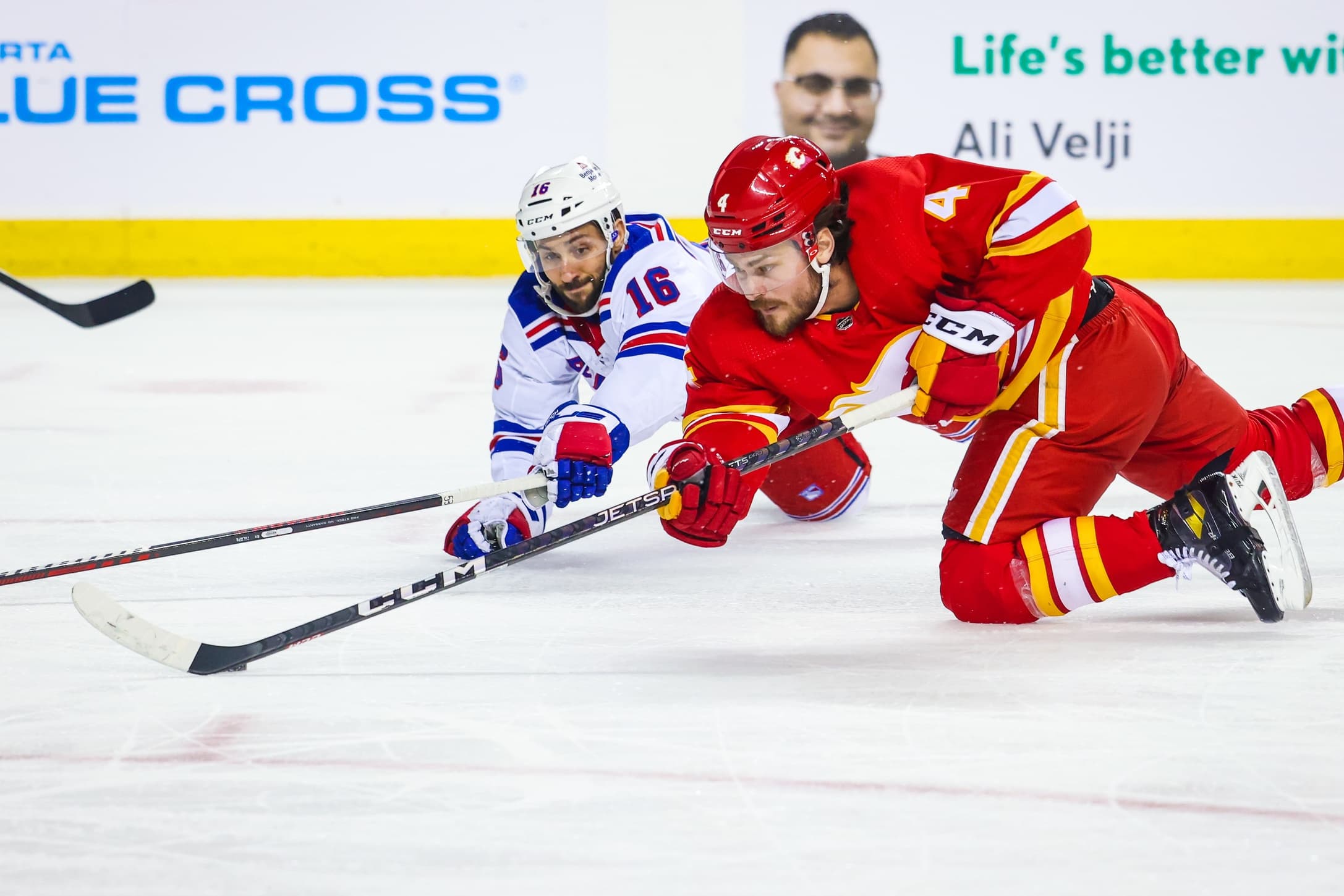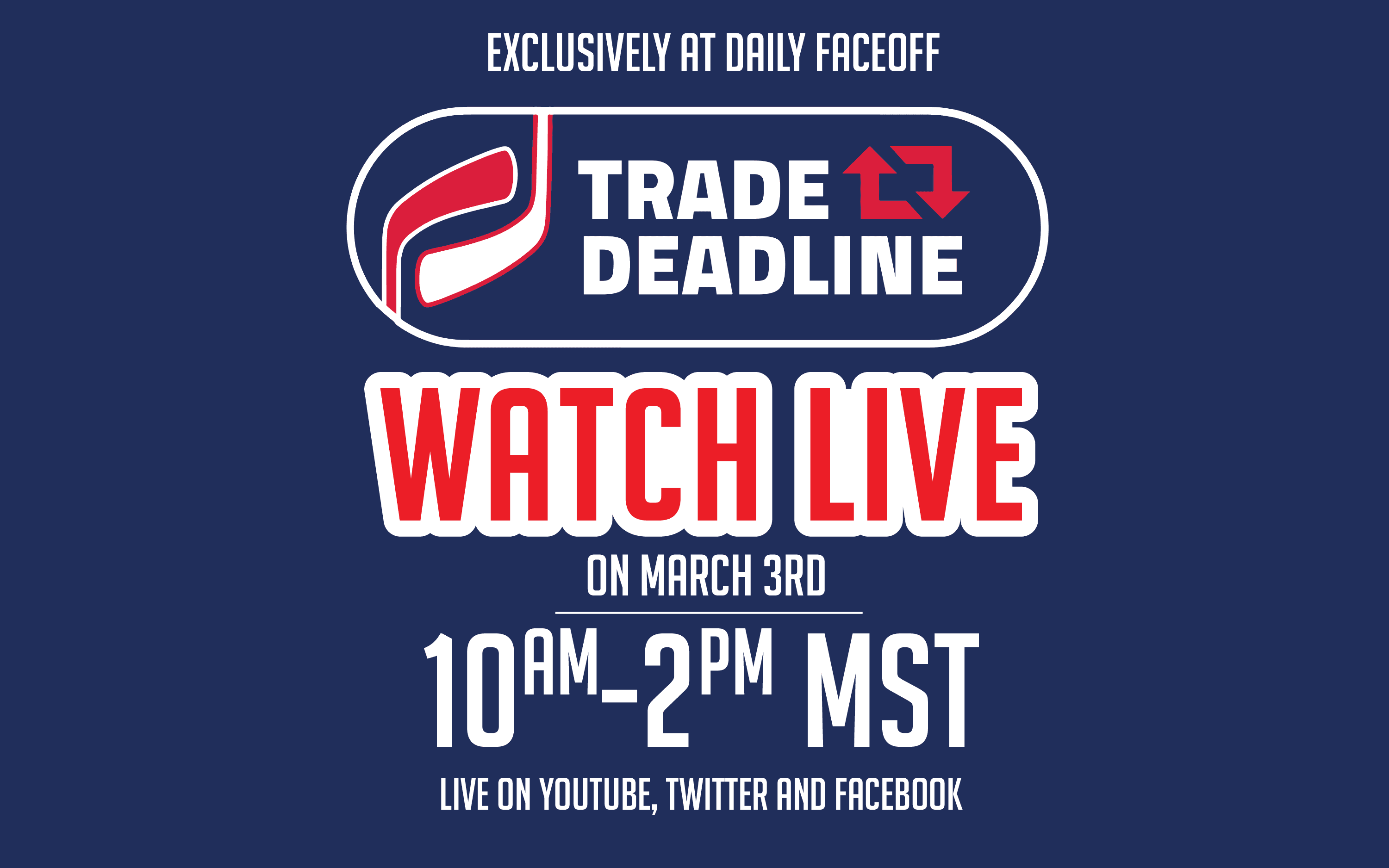Nation Sites
The Nation Network
FlamesNation has no direct affiliation to the Calgary Flames, Calgary Sports and Entertainment, NHL, or NHLPA
The Calgary Flames have a lot of details to juggle before the trade deadline

Photo credit: Sergei Belski-USA TODAY Sports
Friends, the National Hockey League’s trade deadline hits next Friday at 1 p.m. MT – a week from today. The Calgary Flames have some roster and salary cap flexibility, but they have several different details that they’ll have to navigate and juggle their way through as they approach the deadline.
Here’s a snapshot of the things they’re trying to bear in mind.
The 23 player roster limit
Up until 12:59 p.m. MT, the Flames (and the rest of the NHL) are constrained by the NHL’s 23 player active roster limit. Once the trade deadline hits at 1 p.m. MT, the roster limit is gone for the remainder of the season.
As of Friday morning, the Flames have 23 players on their active roster:
- Goaltenders Jacob Markstrom and Dan Vladar
- Defencemen Connor Mackey, Rasmus Andersson, Chris Tanev, Nikita Zadorov, Dennis Gilbert, MacKenzie Weegar and Noah Hanifin
- Forwards Jonathan Huberdeau, Mikael Backlund, Milan Lucic, Blake Coleman, Trevor Lewis, Brett Ritchie, Elias Lindholm, Dillon Dube, Jakob Pelletier, Adam Ruzicka, Walker Duehr, Tyler Toffoli, Andrew Mangiapane and Nazem Kadri
(Michael Stone is on the injury reserve list. Oliver Kylington is on the non-roster/injured list, which is basically the same thing.)
The waiver wire
If the Flames want to open a roster spot for a potential trade acquisition (or a waiver claim) between now and the trade deadline, everybody on the active roster currently requires waivers to be assigned to the American Hockey League’s Calgary Wranglers except for Pelletier and Duehr.
Pelletier and Duehr, as waiver exempt players, can be assigned to the AHL without any restrictions. Everybody else would need to be placed on waivers and clear waivers. After they clear, they could remain on the active roster for 30 days (or play in 10 games, whichever comes first) before requiring waivers again.
The waiver wire remains in effect for the rest of the season.
The salary cap
While there’s no roster limit after the deadline, the salary cap lasts until the end of the regular season. However, past salary cap savings are pro-rated over the remainder of the season.
With a week left until the trade deadline, the Flames have about $3.4 million in cap space they can spend on deadline day – e.g., full-season cap hits that can be accommodated with the space they’ve saved.
The recall limit
After the trade deadline, teams are limited to four non-emergency recalls. An “emergency” recall is one where a team brings up a player because they’re concerned that they might not have enough healthy players to meet the NHL’s lineup requirements: two goalies, six defencemen or 12 forwards. Once an emergency situation is over, the recalled player has to be returned to the minors. If they’re kept on the roster, that burns a recall.
If everybody’s healthy and you call a player up, that burns a recall. (If you bring the same player back and forth four times in non-emergency conditions, that would be your four recalls.)
The exception to the recall rule is that if your team signs a player they already had the NHL rights to (e.g., an unsigned draft pick), they can be assigned right to the NHL without using up a recall. So if the Flames were to sign, let’s say Matt Coronato, they could bring him to the NHL without touching their four recalls. (Hypothetically.)
The AHL roster rule
So, the AHL doesn’t want NHL teams to parachute their players into the Calder Cup playoffs. So to prevent that, if a player isn’t on an AHL club’s roster as of the NHL trade deadline, they’re no eligible to play in the AHL for the remainder of the season.
This could impact potential AHL players like Dennis Gilbert, Walker Duehr or Jakob Pelletier – three guys that were on the Wranglers roster for big chunks of this season already. The Wranglers are destined for the AHL playoffs while the Flames are a bubble team, so we might see the Flames attempt to balance player development, their four recall limit, and hedging their bets a bit in terms of roster flexibility.
Hey, what about LTIR?
We wrote about this at the end of January in quite a bit of detail. In the event that Oliver Kylington is not destined to return to play this season, our understanding is that he would be eligible to be placed on the long-term injury reserve (LTIR).
However, because of how LTIR is structured, there would be no point in enacting LTIR unless the club had used up as much of their available cap space as possible.
THE DAILY FACEOFF TRADE DEADLINE SHOW

Join us on March 3rd for the Daily Faceoff Live: Trade Deadline edition as Frank Seravalli and the panel break down all of the latest rumours, news, and rumblings from around the NHL. The show will be live on YouTube, Facebook, and Twitter from 10 AM – 2 PM MT to keep you up to date on all things trade deadline no matter where you’re watching from.
Breaking News
- Flames Prospect Roundup: How the standings shape up entering the holiday break
- NHL Notebook: Sidney Crosby takes sole possession of most points in Penguins’ franchise history
- FlamesNation Mailbag: Waiting for Santa with reader questions
- Flames injury news: positive signs for Martin Pospisil
- Recap: Martin Frk leads Wranglers to memorable Winter Wranglerfest win in more ways than one
